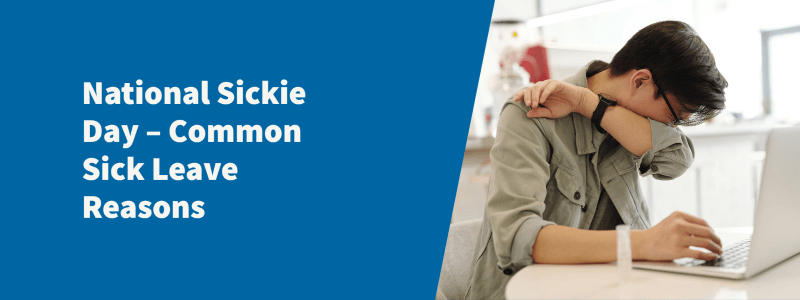7th February 2022 is National Sickie Day. Statistically, the first Monday in February is the most common day that employees will take sick leave from work. Usually, a ‘sickie’ is a sick day taken when the person isn’t really that sick. Regardless of the reason, the day, first founded in 2011, is an awareness day that could be costing you a lot more than you think.
How much do sick leave days cost businesses?
A study compiled by Catapult noted that sick days were costing the British economy up to £100 billion a year, and approx. £554 per employee. A giant figure.
Sick days cost businesses thousands. You can think about it in basic terms – divide a salary into total cost per day and minus the amount that equates to that particular number of sick days. Simple and affective. Yet, that’s just the cost of time. Depending on the role of each person who is off sick, it could mean that the work not getting done, and the money that could have been made by the business, is a lot more.
What are the reasons employees take sick leave?
There are a number of reasons employees take sick days. Most of these are legitimate (according to a report, only 1% of sick days are ‘sickies’) but there are times when people’s reasons are… less than legit. Here are a number of key stats around sick days.
Mental Health Days
According to reports from CIPD, widespread mental health days result in up to 91 million sick days per year in the UK alone. This is reflected in a £15 billion loss of productivity per annum. Mental health is more frequently spoken about, and this could be a positive for businesses and employees. It’s worth paying attention to your employee needs, as they may not be reporting these days to you.
Minor Illness
Minor illness is the major cause of people being off work sick, making up 26.1% of absent employees. This is largely unavoidable, and unfortunately for businesses, it is hard to judge which illnesses are more sincere than others.
Musculoskeletal
Musculoskeletal issues are frequent troubles for employees, both experienced in work and outside of work. 470,000 people have recorded having work-related musculoskeletal injuries, something that can clearly be reduced through proper work practices.
Pulling a Sickie
This is the one that troubles employers the most. Employees taking sick days when they don’t need them is a difficult situation to identify. The best way to analyse this is to look for reoccurring patterns and try and point out trends. While it is a difficult conversation to have, it could also be worth speaking with employees who you are taking multiple sick days and discussing their circumstances and whether there is any way that your business can help.
If you have suspicions that employees in your workplace are becoming ill frequently, there may be more you can do to facilitate a more hygienic workspace. Items like air purifiers and sanitiser are available on our store and will help reduce the risk of illness for your business. Find out more by clicking the links, or filling out the form below.

